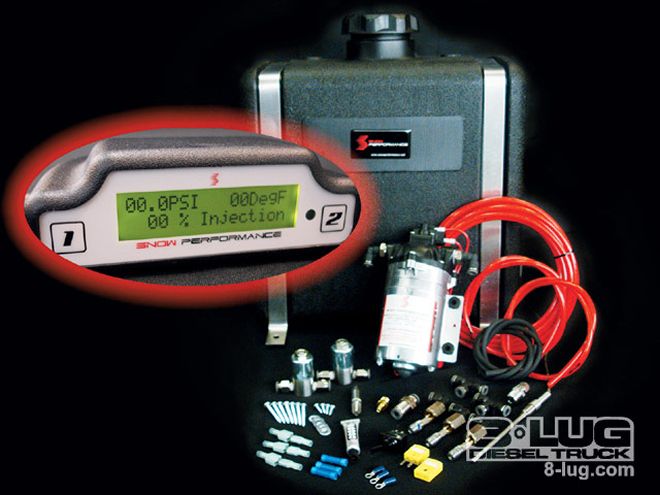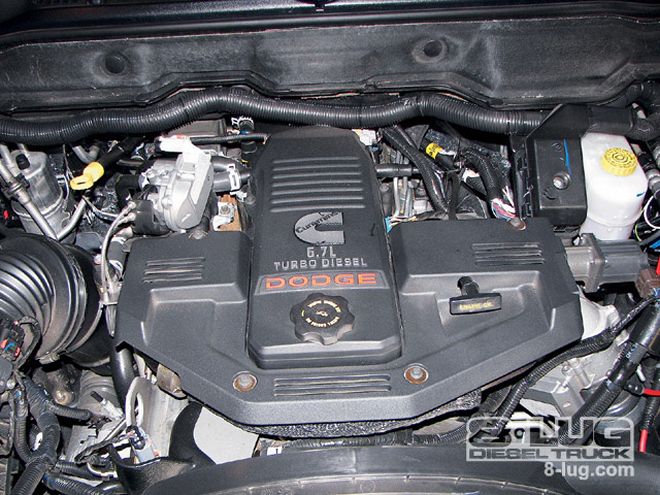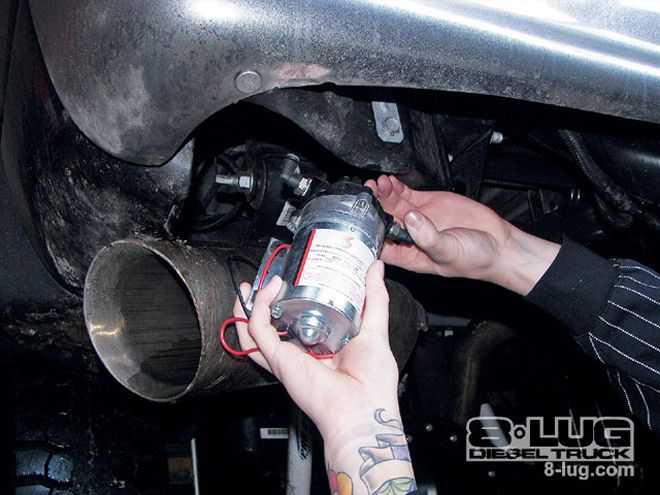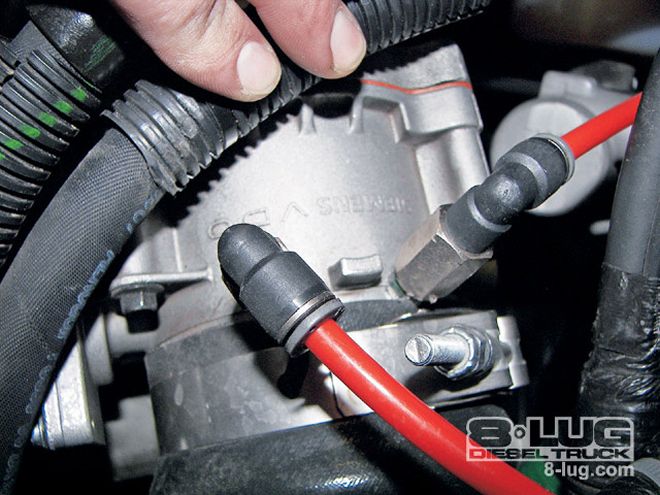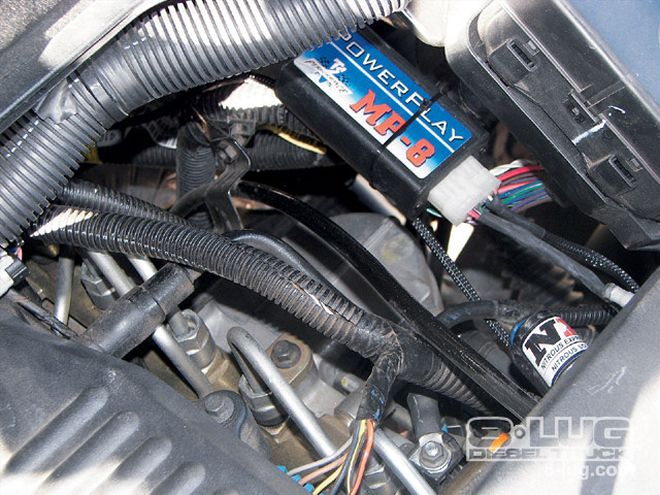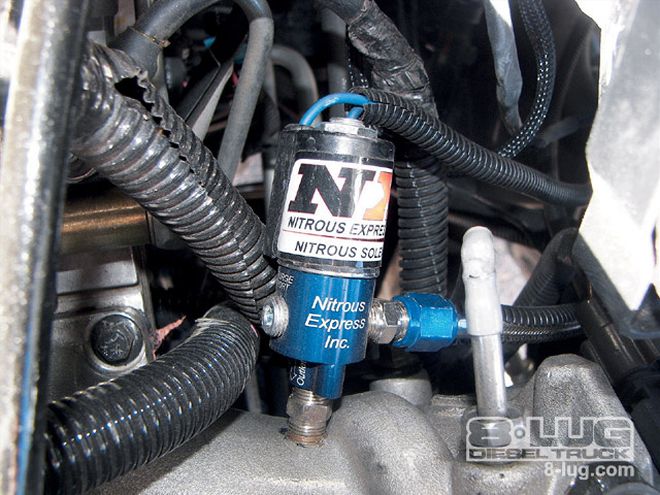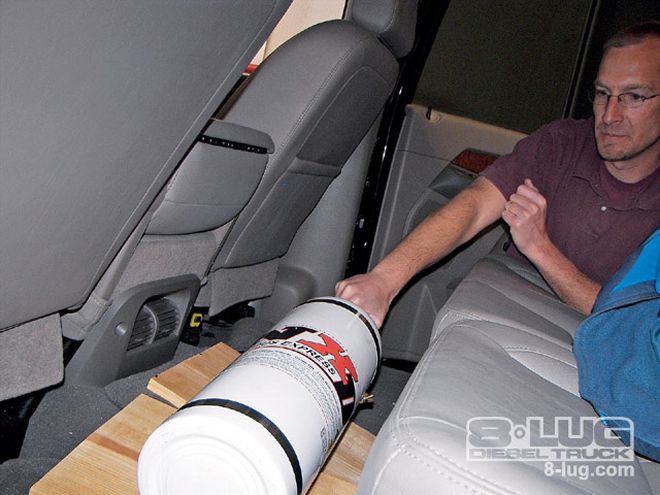By now, diesel owners have come to expect huge power gains from relatively simple bolt-ons. Not from your average air intake or exhaust system, but install nearly any gadget that increases the fuel supply to the motor, and you end up looking like the proverbial hero as your diesel motor thumps out prodigious amounts of newfound torque and horsepower. Given the fact that the power output of any diesel engine is regulated by the fuel flow, it stands to reason that more fuel will equal more power. While most enthusiasts feel that too much is never enough, in the case of fuel supply to a diesel motor, too much can actually be too much.

| Big dyno numbers have become commonplace among diesel enthusiasts, but what happens when you try to combine the big power gains with sizable improvements in fuel economy?
The downside of all these fuelers, whether they be electronic (programming) or mechanical (pressure manipulation) is excess exhaust gas temperature. This is why it is so important to introduce extra airflow to all that wonderful fuel, lest you burn your precious diesel motor right to the ground. This is usually accomplished via additional boost from the turbo, but despite the beefiness of your typical diesel motor, there is a point where the elevated exhaust gas temperatures will quite literally ruin your day.
The days of tossing a ton of fuel at a diesel motor are likely behind us, as both the manufacturers and air resource board have gotten wind of these fuelish shenanigans and taken steps to put a stop to it. On the manufacturer’s front, can we really expect it to honor a warranty claim for its 350hp motor when it was pushed to nearly twice that level? Ditto for the trans, clutch, or rear end. From an emissions standpoint, we have seen the implementation of catalytic converters, PM filters, and even regeneration systems to keep the system in proper working condition.
We already have torque-limiting features built into the software, but how far off is closed-loop operation and even outright regulation of the power output? The environmental agencies have forced manufacturers to become more sophisticated in the programming and maintenance of their diesel offerings. The aftermarket must respond in kind, with not only more power, but more sophisticated (and safe) power.
One company that seems to be keeping pace with the changing performance world is Snow Performance. Snow’s original Boost Cooler was a welcome addition to the diesel performance world, but its system has evolved to meet the ever-changing needs of the modern marketplace. As we all know, the original Boost Cooler was designed to inject a mixture of water and alcohol into the combustion chamber. The extra fuel supplied by the alcohol offered a sizable power gain (remember—more fuel in equals more power out). The beauty of the water/methanol system was that the extra fuel was combined with a mixture of water.
The combination offered a great many positive attributes in addition to the obvious power production. The water/methanol injection decreased the inlet air temp—always a good thing—but the real benefit was the reduction in the all-important exhaust gas temperatures (EGTs). By combining the alcohol with water, the additional power came not with the typical increase, but an actual reduction in EGTs. The combination offered by the Boost Cooler was difficult to match with your typical fuel adder.
While much has been written about the benefits of the Boost Cooler, what makes the new MPG-MAX even more impressive is the fact that not only does the new system increase power and lower EGTs (as expected), but does so while offering improvements in mileage. Not just improvements in mileage under heavy load and boost conditions, but mileage gains under light-throttle cruise conditions. Now add to this rather amazing fact that the gains are further accompanied by a reduction in regeneration mode—especially on vehicles equipped with aftermarket power programmers (that usually increase time spent in regen).
How is this possible, you ask? Quite easy actually, as the secret to the new MPG-MAX system is that it supplies a steady stream of the water/methanol mixture under light-throttle conditions. The minute amount of mixture supplied comes courtesy of a new injection management controller. This injection increases both efficiency and fuel economy by replacing some of the diesel fuel that would be required to duplicate the same speed and load condition. Basically, you are replacing some of the rather expensive diesel fuel with considerably less expensive water/methanol.

| The MPG-MAX LCD screen provided information on the boost pressure, exhaust gas temperature, and injection percentage.
The MPG-MAX has a secondary output that is used to trigger the Power mode. When triggered, the sophisticated microprocessor introduces an independently mapped second stage to fulfill all your high-power needs. Naturally, the system is adjustable to dial in the level of power increase supplied by the kit. Running the dual-stage MPG-MAX system allows the Boost Cooler to supply smooth power under every throttle and load condition. This is accomplished through true 2d mapping and a pair of independently controlled supply nozzles.
The large 7-gallon supply reservoir means the system is always fueled and ready. Unlike your typical on/off system, the MPG-MAX provides both mileage and power gains without leaving a signature on your ECU—meaningthere are no warranty issues. The MPG-MAX will not adversely affect the particulate matter filter. The new system even features a brighter LCD screen setup to display boost, EGTs, and injection-pump output, thus eliminating the need to purchase additional (and expensive) gauges to monitor these variables.
To illustrate the impressive gains offered by the MPG-MAX system, we ran a series of tests on an ’07 Dodge Ram equipped with the 6.7L Cummins turbodiesel. The series of tests illustrated the power potential of not only the MPG-MAX, but the mileage improvements and reduction in regeneration mode. In addition to the gains offered by the MPG-MAX system alone, we also combined the system with a number of other power adders to illustrate the safety aspects (measured in lower exhaust gas temperatures) of the water/methanol injection. As indicated earlier, big power and torque numbers are a simple matter of extra fuel.
Producing the power in a manner that will not reduce the longevity of your motor (or result in outright meltdown) is even more important. To that end, we combined the MPG-MAX system with a TS Performance MP8 fuel pressure enhancer, a Bully Dog Power Pup, and even a Nitrous Express stage 1 diesel system (set to provide an additional 100 hp). This stacking effect can produce impressive power gains, especially considering it was performed on an otherwise-stock motor (the lone exception being the MBRP after-cat exhaust).
First up was the dyno testing. Equipped with no other changes than the MBRP exhaust, the 6.7L produced peak numbers of 279 hp and 694 lb-ft of torque. Next up was the MPG-MAX system from Snow Performance. Though higher power levels are available with higher quantities of methanol, this test was run using commonly available Peak (-25F) windshield washer fluid (approximately 30-35% methanol). Run on the chassis dyno, the MPG-MAX system improved the power output of the 6.7L to 331 hp and 800 lb-ft of torque. Then it was time for the MP8 from TS Performance. Equipped with the MPG-MAX and MP8, the peak power numbers jumped to 380 hp and 928 lb-ft of torque.
The MP8 was adjusted to its highest level for this test. After the MP8, we installed the Power Pup from Bully Dog and ran it on Level 3. Adding the Power Pup increased the power output to 422 hp and 1,114 lb-ft of torque. The final upgrade was the introduction of the NX nitrous kit. Using 100hp jetting, this upped the final power numbers to 518 hp and 1,402 lb-ft of torque. Imagine that, 518 hp and 1,402 lb-ft of torque. That’s enough torque production to alter gravitational fields, but here it was on an otherwise-stock 6.7L with reasonable EGTs to boot.

| If some is good, then more must be better, right? That only holds true on this application since the MPG-MAX system was on hand to keep the EGTs in line. With the safety of the water/methanol in place, we added the Power Pup from Bully Dog to the mix. With the Bully Dog Power Pup set to Level 3 (highest level), the power numbers jumped to 422 hp and 1,114 lb-ft of torque.
In addition to the power numbers, the MPG-MAX system was tested on the road in real-world conditions. Since the nitrous oxide system from Nitrous Express and the MP8 from TS Performance were used only for racing (and dyno testing), the truck was driven using the MPG-MAX combined with the Power Pup from Bully Dog. Use of the additional fuel and power supplied by the Power Pup (without MPG-MAX) increased the amount of time spent in regeneration mode by roughly 30 percent (over stock). Naturally, this had a negative affect on fuel economy.
Adding the MPG-MAX to the system reduced time spent in regeneration mode by 78 percent (compared to Power Pup alone). Every bit as important was that the use of the MPG-MAX improved fuel economy under cruise conditions by as much as 3 mpg. This means the MPG-MAX system improves both power and fuel economy, while lowering the all-important exhaust gas temperatures. The system also greatly reduces the amount of time the motor spends in regeneration mode, further improving fuel economy. These modern times (combined with high fuel prices), require modern technology and the MPG-MAX system from Snow Performance is the next generation of water/methanol injection.
Product Profile:
Snow Performance
866/365-2762
www.snowperformance.net
